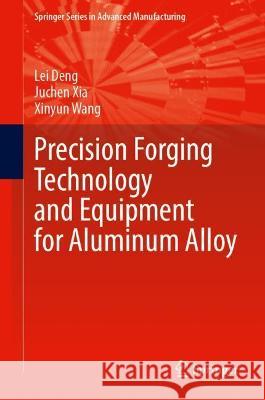Precision Forging Technology and Equipment for Aluminum Alloy » książka
topmenu
Precision Forging Technology and Equipment for Aluminum Alloy
ISBN-13: 9789811918278 / Angielski / Twarda / 2022
Precision Forging Technology and Equipment for Aluminum Alloy
ISBN-13: 9789811918278 / Angielski / Twarda / 2022
cena 621,14 zł
(netto: 591,56 VAT: 5%)
Najniższa cena z 30 dni: 616,85 zł
(netto: 591,56 VAT: 5%)
Najniższa cena z 30 dni: 616,85 zł
Termin realizacji zamówienia:
ok. 20 dni roboczych.
ok. 20 dni roboczych.
Darmowa dostawa!
This book takes the advanced precision forging technology of aluminum alloy parts as the main line, presents the content of precision forging process analysis, process parameter design, mold structure design, numerical simulation of forming process, and process test, combined with a large number of application examples classified according to the structural characteristics of parts. It introduces the theoretical basis of several new technologies and new equipment for precision forging, including the small flash precision forging technology, flow control forming technology, casting and forging combined forming technology, and new CNC precision forging hydraulic presses and servo hydraulic presses, which inspire readers to innovate on new technology and new equipment development.
This book provides readers with the latest knowledge of aluminum alloy precision forging, which is of great reference value in the context of the current increasing attention to lightweight and the increasing application of aluminum alloy parts in automotive, aerospace, marine, and other fields. This book can be used as a reference book for engineering and technical personnel engaged in aluminum alloy forging technology and can also be used as a reference book for researchers, undergraduates, and graduate students interested in materials processing. 










